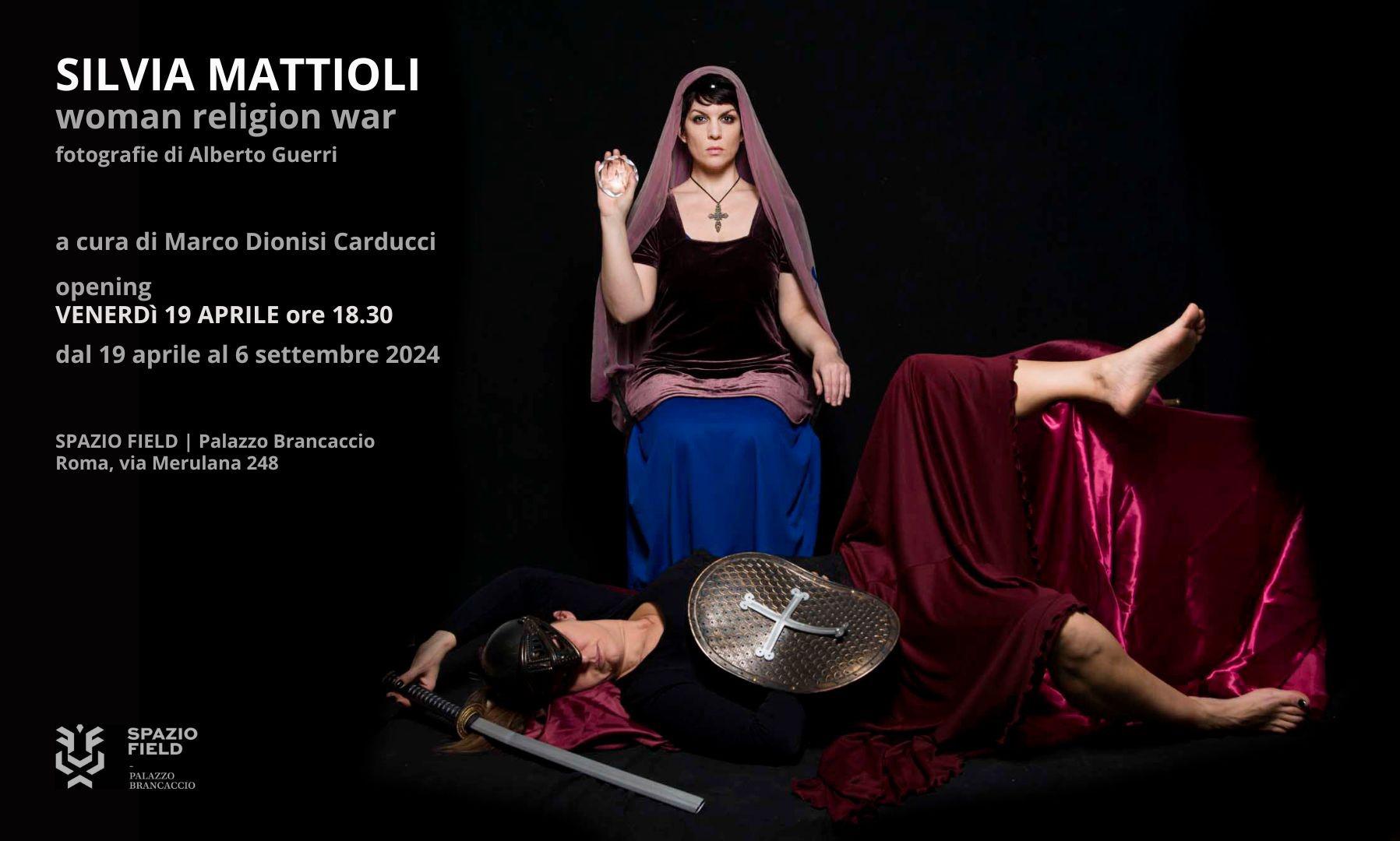Next Friday Spazio Field opens the doors of the main floor of Palazzo Brancaccio, in Rome, to present to the public Silvia Mattioli’s artistic project, Women religion war. Curated by Marco Dionisi Carducci, the exhibition open to the public from 19 April to 6 September 2024, is the product of a study-laboratory of performance and body art on the female imagination between war and religion. These are themes of absolute historical predominance, but which have always relegated women to a secondary level. Through photographic tables, installations, audiovisual performances, Silvia Mattioli tells her refined and aware narrative. A free and mature artistic eclecticism.
Visual artist, videomaker, director, playwright, in front of the photographic shots of Alberto Guerri, Silvia Mattioli deliberately breaks the mold, subverts those rules that the logic of power has chosen for women. In her sets, a re-enactment of the tableau vivant of courtesan memory, female bodies fill the scene, reaffirming their existence (and resistance), their history, their identity, their spirituality. Disguises, revisitations, alterations in which the female body comes into play (in French jouer means acting), offering the spectator a different interpretation compared to male universalism.
“The artist reappropriates insurmountable cultural and social expressive canons, through a classical narrative based on images, capable of providing the public with an alternative and counter-trend reading, but also the clear denunciation of war and every type of violence , primarily towards women”, explains the note by the curator Marco Dionisi Carducci. In Women religion war, the conceptual artist “uses the image of a set of which she is the actress and author. Her stories are tableaux vivant of courtesan memory. Living paintings without voice and movement which in the nineteenth century marked the birth of the modern theatre. The women portrayed do not hide, in the raw and impactful narration, their entire character emerges in the table The legacy of the game, an emblematic allusion to the complex bond that binds the female universe to play and freedom. of expression. Pursue one’s dreams or remain victims of common judgment? Does woman exist, resist and unleash her humanity in historically adverse contexts”.
“The author is heir to the brushstrokes of Artemisia Gentileschi, a painter of the Caravaggio school, as well as the cinematic female portraits of Antonio Pietrangeli, whose screenplays gave women a soul for the first time. Even light does not spare the bond with tradition. Light as an expressive means, a tone that accompanies and enhances the emotionality of the scene, guiding its narrative rendering. In the Purple Heart panel, light and drapery refer us to the Caravaggio tradition, while the chromatic aspect almost unconsciously embraces the Renaissance memory that has its roots in the works of Masaccio”, underlines Marco Dionisi Carducci.
In the scenes, immortalized by Alberto Guerri’s shots, “the contrast between the themes covered and the objects, often toys – continues the curator – emerges clearly – They are the harmless weapons of women, who take the stage of history without having the ability to bad. The game, in contrast to its etymological origin, is a spokesperson for provocation. It does not have the ambition to change the course of events, but to make people reflect , which in French is jouer (play in English). The plastic trinkets reinterpret war and religion, “a bit like the La Smorfia trio did over forty years ago. In the theatrical sketch lent to television La Navità (‘Annunciation! Annunciation!’), Troisi, Decaro and Arena they stage their reinterpretation of the sacred by playing with toys, a serious, revolutionary game, which will lead to the accusation of contempt of the state religion. The reinterpretation of the myth, like Medusa and Athena; yes, disturbing) Red Pietà of Michelangiolesque character. The author profanes the classical iconography in the already defined ‘surrealfeminism’, thoughtfully reconstructing the image of the woman through physicality and intellect”.
The exhibition at the Spazio Field of Palazzo Brancaccio (via Merulana 248 – Rome), from 19 April to 6 September 2024, is free to enter by appointment. For information write to [email protected]
